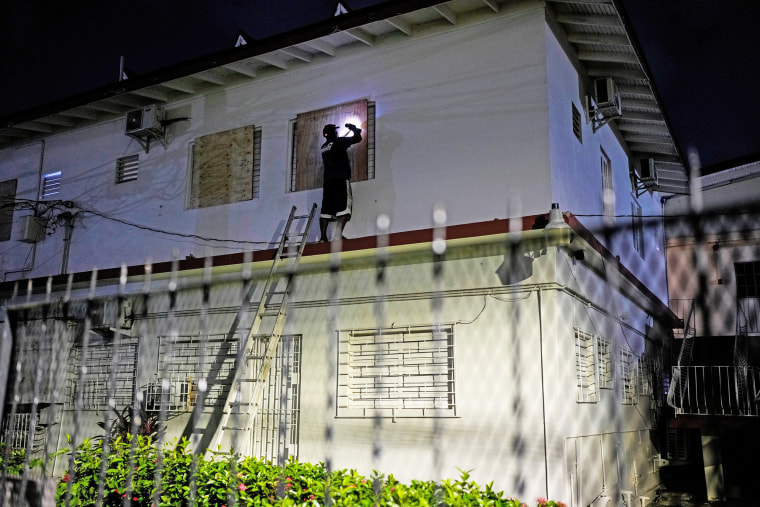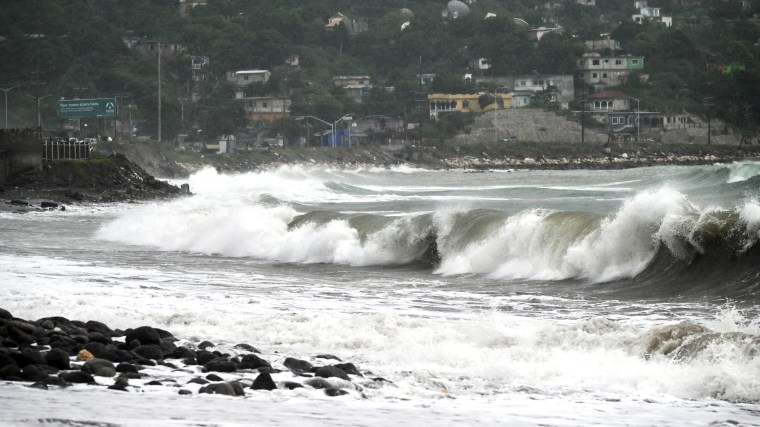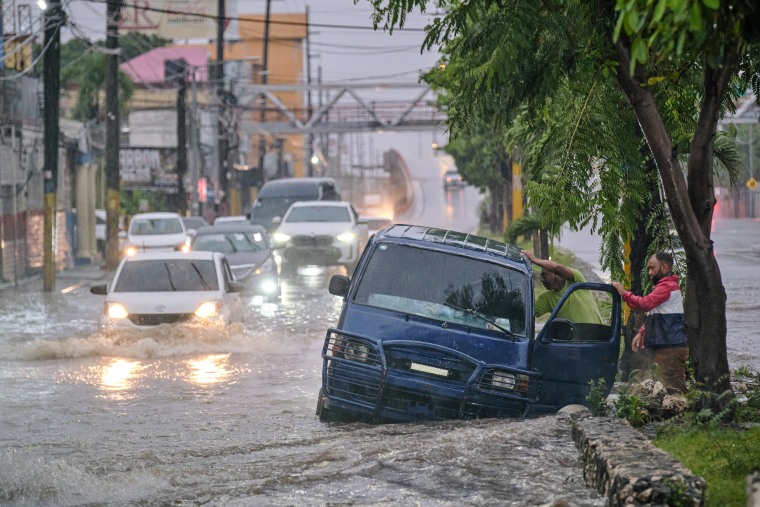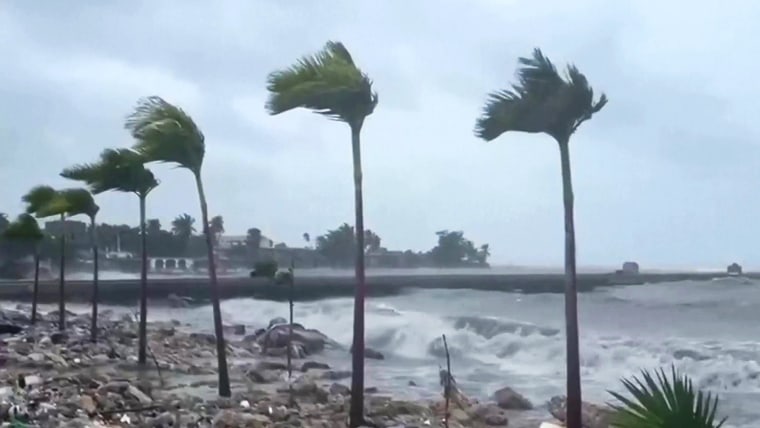Hurricane Melissa intensified to a powerful Category 5 storm Monday as forecasters warned it would cause catastrophic flash flooding, life-threatening landslides and extremely strong winds across the Caribbean.
The U.S. National Hurricane Center in Miami warned people in Jamaica to go to shelters and stay there during the storm, with dangerous conditions expected to last through Tuesday.
Follow along for live coverage
Melissa is set to make landfall in Jamaica sometime Tuesday before moving across southeastern Cuba on Wednesday, its force diminished by tripping over land, and then heading across the southeastern Bahamas on Wednesday night, deflating to a Category 2 storm, U.S. forecasters said.
Jamaica Prime Minister Andrew Holness warned residents Monday to take the threat of the storm seriously, particularly young people who may be unaware of what a strong hurricane can do.
“We urge persons to stay inside, stay within the precincts of your home,” Holness said.
Three people have died in Jamaica while preparing for the hurricane, all related to the felling of trees, the country's Minister of Health and Wellness Christopher Tufton said Monday.

At 11 p.m. ET, the Category 5 storm was moving north-northeast at 2 mph, and its center was 150 miles southwest of Jamaica's capital, Kingston, the hurricane center said.
"After remaining nearly stationary over the past few hours, Melissa now appears to be moving slowly north-northeastward," the center said in a forecast discussion Monday.
The storm's minimum central pressure, a measure closely tied to its strength, was 903 millibars, which indicates rare power. Katrina, which devastated New Orleans in 2005, was 920 millibars — weaker than Melissa.
The storm's stalling has pushed back the arrival of Melissa's core over Jamaica, eastern Cuba and the Central Bahamas, though it should be past them all as later this week, forecasters said.
Late Monday, Melissa still whipped out maximum sustained winds of 175 mph, sometimes greater, putting it in the highest and most dangerous category on the Saffir-Simpson hurricane scale, the hurricane center said.
The most powerful storm to hit the region since Hurricane Gilbert in 1988, Melissa will bring between 15 and 30 inches — and up to 40 inches — of rain to Jamaica, as well as extreme winds, extensive infrastructure damage and life-threatening storm surge along its southern coast, the hurricane center said.
It's the third Category 5 of the 2025 season. The last time a single storm season saw more than two storms of this strength was 20 years ago, in 2005. Melissa is also the latest Category 5 storm in an Atlantic hurricane season in 27 years, since Hurricane Mitch in 1998.
Some areas of eastern Jamaica could be inundated with up to 40 inches of rain, more than some areas of the country typically get in a year.
Wind speeds in mountainous areas could be 30% higher than the main storm, meaning potential winds of more than 200 mph.
Desmond Mackenzie, Jamaica’s minister of local government and community development, said Sunday night that 218 people were already in some of the country's 881 shelters. As of Monday morning, all of the island's shelters were open, but many were still not full.
Mackenzie said that many Jamaican communities "will not survive this flooding."
Jamaican residents were filling up gas canisters for their generators and boarding up windows to prepare for the intense wind and rain. Zookeepers in the capital city were relocating their animals ahead of the storm.
An American tourist who caught one of the last flights from the island said there was a lot of turbulence getting back to the United States.
"It was almost like getting out and watching the rain come behind us," he said. "But luckily we made it."
Nicole Doyon, from Miami, was visiting the island for a yoga retreat, but couldn't get out before the storm despite exhausting all of her options.
"There was nothing available. At this point, there are no options," Doyon said.

Haiti and the Dominican Republic will also face catastrophic and life-threatening flash flooding by midweek, the hurricane center said, while Cuba is facing heavy rain, floods and landslides. There is also a hurricane watch for the central and southeastern Bahamas and the Turks and Caicos Islands.
The storm had killed at three people in Jamaica, three in Haiti and one in the Dominican Republic as of Monday, officials said.

Holness, the prime minister of Jamaica, said Monday that the government was “as prepared as we can be” as the storm approached. How long the storm spends over the country could raise the risk of destructive landslides.
“We understand wind and rain and what it can do. But if it stays for a very long time, you’re not just dealing with saturation, you’re dealing with a high level of destruction,” Holness said.
The storm is forecast to move southeastern Cuba on Tuesdsay night, and across southeastern or central Bahamas on Wednesday, forecasters at the NHC said. Parts of both Cuba and the Bahamas were under hurricane warnings Monday.




